Father of transport aviation. Oleg Konstantinovich Antonov
In 1912, Konstantin Konstantinovich and his whole family moved to Saratov. This happened for several reasons. First, there were powerful relatives who promised young help to the family. The second reason for the departure was the unbearable nature of the grandmother, Anna Alexandrovna. By the way, despite the difficult temper, the grandmother adored Oleg and constantly indulged him.
At the same time, student Vladislav Viktorovich, Oleg's cousin, returned from Moscow to Saratov. In the evenings, the young man liked to talk about the last the news... In the first place, of course, there was talk about aviation - at the beginning of the last century, everyone was fond of flying machines. Six year old Oleg caught every word. He was fascinated by the exploits of the first pilots. Much later, Oleg Konstantinovich wrote: “The stories made a huge impression on me. Sixty-four years have passed, and I still remember those evenings. Then I decided that I would fly. "
Parents, of course, did not pay attention to the boy's hobby. Anna Efimovna generally said that people do not need to go up to the sky, and her father thought that a man needed to find a more solid occupation. Only the grandmother understood everything, she presented the first model of the airplane with a rubber motor to the future aircraft designer. After that, Oleg began to collect everything, one way or another relating to aviation - drawings, photographs, literature, toy models. The compiled reference book subsequently helped Antonov immensely - he knew all the history Aircraft world. The designer recalled: “This collection taught to look at the aircraft from the point of view of their development. No one will convince me that Junkers were the first to create “free-standing wings” for an aircraft. This was done in France long before him - in 1911, by designer Loveserser ... ".
The study of young Oleg in the Saratov Real School, where he enrolled to study exact sciences, did not bring him much success - he was far from being the first student in the class. But Antonov perfectly learned French, which in the future repeatedly helped him out during meetings with foreign delegations. When World War I began, Oleg's mother, following the customs of the Russian intelligentsia, settled down as a sister of mercy. The work in the hospital ended tragically for Anna Efimovna. Tying up the wounded, she got the infection through a scratch on her arm and died in agony from blood poisoning in her prime. It happened in the 1915 year, after that the Antonov family moved to Groshevaya street, and the grandmother started raising Oleg.
At the age of thirteen, Oleg together with the local children founded the “Aviation Fans Club”. Soon, the "Club" appeared its own eponymous magazine, published in a single copy. The editor, journalist, artist, calligrapher and publisher was Antonov. The magazine contained cut photographs of airplanes and their technical data, freehand drawings, interesting stories, reports on Club meetings, and tips for beginning model builders. There were even poems about pilots. In those years in Saratov there was no systematic literature, the boyish magazine, unique in its seriousness, passed from hand to hand, even getting into the greasy fingers of the kruvoenlet.
When Antonov was fourteen years old, the Saratov Real School closed. Children were accepted into a single school only from the age of sixteen, his elder sister Irina already studied there legally. The boy made a bold decision - he began to go to school with his sister. He quietly sat in the back rows and eagerly absorbed everything that the school could give. Gradually, they got used to it and two years later they issued a certificate of completion. After that, Oleg tried to enter flight school. However, only strong, experienced people from the working class were taken there. Antonov had the look of 12-13 for years, affected by typhoid fever and famine. Not in desperation, the future aircraft designer submitted an application to the Saratov University for the railway department. He was accepted, but after a while the faculty was liquidated during the reorganization. Oleg didn’t refuse to enter the building department.
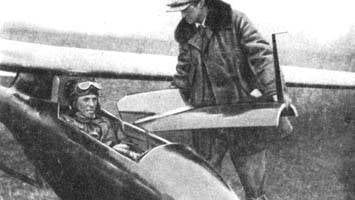 In order not to waste time in vain, he, together with his comrades from the Club, began to design his own glider. And soon, under the Saratov provincial executive committee, a branch of the Society of Friends of the Air Fleet. Its leader, a former actor Golubev, cordially greeted the guys, helped to get some materials and allocated them a room - a small hall of the Saratov Industrial College. It was here that Antonov’s first brainchild, the OKA-1 Glider Pigeon, was created.
In order not to waste time in vain, he, together with his comrades from the Club, began to design his own glider. And soon, under the Saratov provincial executive committee, a branch of the Society of Friends of the Air Fleet. Its leader, a former actor Golubev, cordially greeted the guys, helped to get some materials and allocated them a room - a small hall of the Saratov Industrial College. It was here that Antonov’s first brainchild, the OKA-1 Glider Pigeon, was created.In 1924, the guys received an offer to take part in the second rally of glider pilots, held in the city of Koktebel. In the shortest possible time "Dove" was completed. Without conducting any tests, Oleg Antonov and his friend Zhenya Bravarsky plunged their creation onto the train platform and set off for the coveted Crimea. After a fortnight, they arrived in Feodosia, with great difficulty on the incongruous Crimean majaras transported the glider to Koktebel.
One god knows how two Saratov youths managed to restore their decently battered aircraft on the road. As a result, the Dove received permission to fly out, a professional pilot Valentin Zernov was appointed to manage it. However, the glider did not take off, having made only a couple of short jumps, it slid on the grass of a gentle slope. Oleg Konstantinovich remembered forever the words of the test pilot said after this: “Guys, do not be discouraged. This bird is not bad, but you will be better. " Grain was not wrong. For the unique design of the airframe, Antonov received a diploma, but the main thing was different. At the rally, he met many enthusiasts who, like him, burst into the sky. Among them were Artseulov, Ilyushin, Pyshnov, Tikhonravov, Tolstoy and many other famous personalities.
In 1925, Oleg Konstantinovich was recommended for admission to the Leningrad Polytechnic Institute. Gathering things, Antonov went to the northern capital, where he was, to great joy, enlisted as a student in the ship department, in the hydroaviation department. In Leningrad, the future designer literally fell a huge number of duties and obligations. An energetic young man already well versed in the glider business, he was elected secretary of the ODVF technical committee, at the same time he got a job as an instructor of an aeromodel circle. However, this activity did not bring money and, in order to live, Oleg Konstantinovich wrote notes to newspapers, painted posters, made models of airplanes. And the future designer went to lectures, successfully passed tests, did practical work and, most importantly, did not cease to design and build gliders. A lot of time he took away the flights that he made at the airfield of a glider station. In addition, it is known that he loved to attend theaters and exhibitions. It is impossible to understand how Antonov managed all this. Obviously, the slogan later proclaimed as an answer to the question of how to cope with affairs - “do leisurely actions without intervals between them” - was born at that time, in difficult years of Leningrad studies.
In 1930, Oleg Konstantinovich graduated from the institute, and in 1933, a twenty-seven-year-old designer was appointed to the post of “chief” at the design bureau of a gliding plant in Moscow. He was charged with the responsibility to develop light-wing cars, which the new plant in Tushino was supposed to produce in large quantities. By that time, the young aircraft designer already had vast experience in building gliders. Having created OKA-1924 in his Dove 1 over the next six years, he created OKA-2 and OKA-3, Standard-1 and Standard-2, as well as a powerful glider-parter "City of Lenin", which won a bunch of rave reviews at the next Koktebel rally. Oleg's comrades were not at all surprised at his high appointment. However, in this life, nothing comes easy and you have to pay for everything ... Leaving the tiny room on Tchaikovsky Street in Leningrad, Antonov threw to his friends: “In my opinion, here I received my TBC”. Later Oleg Konstantinovich was repeatedly treated for tuberculosis, but the disease was constantly returning to him.
While the Tushino plant was not completed, the glider design bureau was forced to use the workshop offered by Osoaviakhim and located on the Garden Ring in the basement of a multistory building. These cellars used to be used for storing wines, and now they were given to two united organizations - reagents and glider pilots. The planners were headed by Oleg Antonov, and the group that studies the jet propulsion is Sergei Korolev.
For several years, Antonov was designed more than twenty different models of gliders. Oleg Konstantinovich achieved his main goal - to create a mass aircraft for various segments of the population of the country. Eight years the plant produced two thousand gliders a year - an incredible figure for that time. Their cost was unbelievable - in the old calculation no more than one thousand rubles. Curiously, despite the hellish workload, Antonov had time to go in for sports. His passion throughout life remained tennis. He played aircraft almost like a professional tennis player. At Petrovka, where the capital's courts were located, he had to drive early in the morning, before work. During these years, Antonov got married for the first time. His wife was Lydia Sergeyevna Kochetkova, a friend of Ira's sister. It all happened very quickly. Having met at the tennis court at the beginning of summer, the young people went to Koktebel on their honeymoon in September.
With housing in those years it was very difficult. Spouses Antonov lived with spouses Sheremetyevs in one common apartment. Each family had a room, another one - a common one, in which there were drawing boards of designers. The room was used as an office for collective work. On a rare weekend, Antonov took up the brush. He painted pictures inspiredly, even participated in a number of exhibitions of amateur artists. His favorite subjects were landscapes, still lifes and, of course, gliders. And in 1936, Lidia Sergeyevna gave birth to a son. Called him romantically - Rolland.
Oleg Konstantinovich, unlike dozens of other designers, was not under arrest; however, the cruel fate of the second half of the thirties of the last century did not bypass him. In Osoaviakhim, the leadership changed, the views of new chiefs on gliding, as a mass sport, began to be expressed in one phrase: “Fly less, live longer!”. The decline of glider sport began already in 1936, in the following years everything finally collapsed. Antonov was removed from his post, and the glider plant was closed. Talented designers scattered who where. First of all, Oleg Konstantinovich turned to his old friend on Koktebel rally - an outstanding aircraft designer Alexander Yakovlev. He, knowing perfectly well the talents of Antonov, gave him the job of a leading engineer in his design bureau. In the yard was 1938 year.
The new job suited the designer quite well; he had long wanted to switch from designing gliders to building airplanes, seeing in it the logical continuation of his activity. In the spring of 1940, Antonov was appointed chief designer of a small design bureau at an aircraft factory in Leningrad, and in 1941 he was transferred to Kaunas (Lithuanian SSR). One Sunday morning, 22 June 1941, the aircraft designer woke up with a strong crash. Soon one of the employees ran into his room with wide eyes: "War ...". Kaunas was located near the border, urgent instructions were received from above: “Prepare immediately for evacuation”. Loudspeakers alarmed about the bombing of Sevastopol, Kiev, Vilnius, Riga, Zhytomyr, Brest .... The city of Antonov left in the evening. Together with the last employees of the design bureau on the captured fire engine, he headed east along the road, clogged by refugees. An hour later, the Germans entered Kaunas. Two days under incessant shelling from the air the car drove on broken primers. Often it was necessary to move out into a ditch and hide in forests and bushes. People spent the night in haystacks near the road. Antonov reached Moscow only by the end of the second day.
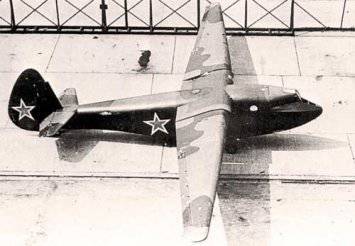 And again he had to start everything from scratch. The team hastily assembled and sent to the old glider plant. “We will again create gliders: transport and cargo,” Antonov announced to the people a few days later. After a couple of months, Oleg Konstantinovich developed a unique transport-landing glider A-7. The device was designed for seven passengers and was necessary to provide people, ammunition and food guerrilla groups, fighting in the rear of the enemy. Antonov-7 could land on small forest glades, on plowed fields, even on frozen, snow-covered rivers. As a rule, the landings took place at night under the light of bonfires, in which an inexpensive glider was usually burned after unloading. It is hard to imagine how much help these aircraft provided to the partisan movement during the war years. The medal to the “Partisan of the Great Patriotic War” adorned Oleg Konstantinovich’s chest not by chance.
And again he had to start everything from scratch. The team hastily assembled and sent to the old glider plant. “We will again create gliders: transport and cargo,” Antonov announced to the people a few days later. After a couple of months, Oleg Konstantinovich developed a unique transport-landing glider A-7. The device was designed for seven passengers and was necessary to provide people, ammunition and food guerrilla groups, fighting in the rear of the enemy. Antonov-7 could land on small forest glades, on plowed fields, even on frozen, snow-covered rivers. As a rule, the landings took place at night under the light of bonfires, in which an inexpensive glider was usually burned after unloading. It is hard to imagine how much help these aircraft provided to the partisan movement during the war years. The medal to the “Partisan of the Great Patriotic War” adorned Oleg Konstantinovich’s chest not by chance.In mid-October, when the Germans broke out onto the Leningradskoye Highway and found themselves eighteen kilometers from the capital, the Antonov group embarked on a train and headed for Western Siberia. For two weeks she traveled to Tyumen. Oleg Konstantinovich found himself in an unfamiliar city, where he had to live and work, launch the most complex mechanisms of the plant and the design bureau, lacking enough people and materials, heat and water. However, experience in such matters Antonov was not to occupy.
After the enemy was thrown back from Moscow, Oleg Konstantinovich returned to the capital. He was appointed to the position of the chief engineer of the Aviation Industry Commander Committee of the People's Commissariat of Agriculture, and in February 1943, Antonov transferred to the Yakovlev Design Bureau, which was developing the famous Yak. A talented aircraft designer took part in the modernization and fine-tuning of the whole range of combat vehicles from the Yak-3 to the Yak-9. In the autumn of 1945, Oleg Konstantinovich was offered to head the branch of Yakovlev Design Bureau at the Aviation Plant named after him. Chkalov in Novosibirsk. He did not hesitate, he agreed, because he had to start work on the creation of new type of aircraft, not agricultural but agricultural. The country needed heavy-duty vehicles capable of taking off from a good aerodrome or from any relatively flat field. His closest associates went to Novosibirsk with Antonov. In addition, Oleg Konstantinovich took with him a whole course of graduates of the Novosibirsk Aviation Technical School. It was a big risk. Twenty-year-old young people, with no experience, hungry, half-dressed and neglected, were to become the basis of the team, to which the most important tasks were set. However, Antonov had an amazing ability to rally employees around an idea. He said: “Not orders create a team, although they are needed. It is not created by rearranging or picking up people. Not building unites the team. The main thing is the unity of purpose. If people understand and accept it, they do not need to be “whipped up”. And the "kindergarten" did not disappoint. In August, 1947, the first copy of the AN-2, was already at the gate of the assembly hall.
However, before the serial production of the aircraft was still far away. Antonov had to conduct not only numerous trials and inspections of AN-2, he also had a chance to survive the clashes with the bureaucracy of the governing apparatus, with obsolete traditions, with indifference to the fate of new inventions. Oleg Konstantinovich often repeated: “Our work is not as smooth and quiet as it seems ... In our work, the main thing is the struggle. The fight is the most uncompromising, the most acute. " And this struggle made itself felt. From the experiences of Antonov began exacerbation of tuberculosis. For four months he was treated in sanatoriums and hospitals, and after a long time he took antibiotics.
It was decided to build AN-2 aircraft in Kiev. Antonov Design Bureau moved from Novosibirsk to Ukraine. All efforts were not in vain, 6 September 1949, the first serial AN-2 took off into the sky. Much later, summing up his activities, the designer said that this was his greatest success.
The new city was immediately liked by the general designer. The move went to the benefit and health of Oleg Konstantinovich. “This is where I dream to stay until the end of my life,” said Antonov. - “Stop driving around the country: Saratov, Leningrad, Moscow, Kaunas, Tyumen, again Moscow, Novosibirsk. Is it a bit too much? For the rest of his life, Oleg Konstatinovich lived in Kiev. It was in the capital of Ukraine that all the famous aircraft of the genius aircraft designer were born, which brought glory to our Fatherland.
The huge workload of official and public affairs forced Antonov to strictly regulate the work. He always appeared in his office exactly at 9 in the morning. I looked through mail from all over the world, held a meeting to solve specific problems. Then the General Designer got acquainted with the new developments, looked at the drawings, criticized, recommended, carried out test calculations, estimated various options, tying together the results of the activities of workshops, departments and groups. The creative process in the mind of Oleg Konstantinovich did not stop for a minute. He always had a drawing board in his office and at home. To draw, he began, as a rule, suddenly, throwing all the other things, as if the born idea was looking for a way out. In the second half of the day, Antonov held meetings with people and organizations, made the necessary trips. In the remaining time he worked on magazines, got acquainted with new publications. In the evening, the General Designer sat behind the wheel of his own "Volga" and drove home - to his small two-storey cottage in a working village.
The garden near the house became for Antonov a place of spiritual rest, as well as a source of the birth of new ideas. By his own admission, all his life before moving to Kiev, the designer lived at a construction site, all his life he did not wake up from the noise of the foliage outside the window, but from the rattle of an excavator. Antonov wrote “A lot of design finds were made by me between the black chokeberry and apple trees, between sea buckthorn and hazel. Working in the garden improves my working capacity, as a result, the garden does not take away, but saves time. ”
Close friends and acquaintances often gathered in his house, among them were the architect and academician Anatoly Dobrovolsky, the writer and surgeon Nikolai Amosov, and the scientist Lyubomir Pyrig. Antonov did not like to be at the table in the spotlight, but actively supported a conversation on any topic. He himself preferred to talk about literature, from the writers were close to Antoine de Saint-Exupéry and Nikolai Gogol. He knew their works practically by heart. In addition, Oleg Konstantinovich loved listening to music. People's Artist of Ukraine and a good friend of the Antonov family Dina Petrynenko often sang in their house. Nikolai Amosov said: “With all his appearance, Oleg protested against the image of the successful businessman of the era of“ stagnation ”- Antonova was not interested in the sauna, fishing and other hobbies of the leaders of his rank. He preferred to work in the garden, read, go to exhibitions. At the same time he was a resolute and courageous man. He spoke freely on any topic, criticized the leadership, which he accused of poor management and the absence of "feedback" ... At the same time, Oleg seemed to keep everyone at a distance, even I could not completely overcome it during the long years of our friendship. Why so, I thought? It was not a matter of intelligence, such a feeling arose from his extreme modesty and vulnerability. ”
Of course, sometimes tragedies happened. AN-10 with passengers fell near Kharkov, AN-8 crashed right in front of Antonov. Oleg Konstantinovich seriously experienced what had happened. He said to friends: “I will not build passenger planes anymore. I will not survive the simultaneous death of many people. After the accident with the “ten”, I woke up more than once in a cold sweat at night ... ”. The harsh life made its unforeseen adjustments to the fate of a well-designed, thoroughly tested air machines, forcing the creator to suffer tormented by misfortune. Antonov cared about each of his cars, each crash with the plane he created lay a heavy burden on the designer's heart. The same Amosov wrote: “For the general, Oleg Konstantinovich was too sensitive. At the same time, this was happiness for the people. After all, AN-10 once transported the maximum number of air passengers in our country. It is very responsible ... And how terrible to make even the smallest mistake. "
Despite the terrible illness, Antonov throughout his life was actively involved in sports: playing tennis, ping-pong, skiing, hiking. The aircraft designer said: “A cultured person is obliged to treat his body — the source of energy and the seat of reason — with the same love that a good mechanic treats his mechanism. The machine loves care, lubrication and caress! What to say then about such a complex mechanism as the human body! ”.
It is worth noting another very characteristic feature of Antonov - the continuous modernization of a seemingly complete structure. He began to follow this rule when he was building gliders - it was always a series of aircraft, every detail of which was subject to constant improvement. The designer argued that modernization processes are often more important and effective than creating a new aircraft with unexplained capabilities: “Sometimes an inexpensive and simple change to an airplane, a car, or a machine can increase the accuracy of work and performance, and sometimes give new features to machines. A modification is always cheaper and faster than creating a new aircraft or a diesel locomotive. ”
The birth of "Ruslan" (in 1981 year) was a kind of swan song of Oleg Konstantinovich. He embodied in the new machine all the basic principles of design, developed by him throughout his life. In addition, the giant aircraft has absorbed all the most modern ideas that have appeared in the world’s aircraft construction in recent years. The work of the designer on the AN-124 coincided with his election as academician of the USSR Academy of Sciences.
At work, Antonov was always strongly opposed to administrative-command methods of control. In general, he almost never ordered - in the most intelligent form he advised or asked. Always appealed to "you." In the history there was only one episode where he, not restraining the argument, threw the inkwell into his opponent. However, this was indeed the only case, and Oleg Konstantinovich, moreover, thank God, he missed. Antonov, who had already become world-famous aircraft designer, amazed his subordinates with his accessibility. At any moment, he could appear in the department, stand behind the employee, intervene in the work, continue the development of someone else's thought that seemed interesting to him. He was especially attracted by the irregularity of other people's views and ideas. None of the major designers paid so much attention to amateur inventors, enthusiasts and craftsmen. Oleg Konstantinovich had an amazing ability to recognize talented people, with all his strength he supported their initiatives, invited me to work. Under his wing grew many famous designers. Antonov transferred this support of talented people to the students of the Kharkiv Aviation Institute named after him. NOT. Zhukovsky, in which with 1977 headed the department of aircraft design.
All the questions and problems that arose in the Antonov design bureau were, as a rule, publicly discussed. Oleg Konstantinovich could, with surprise for everyone, easily admit his mistake, accept someone else's point of view. In this case, he said: "I was wrong and need to go through it." In addition, he showed interest in the destinies of his workers - he helped with topics for scientific theses, independently compiled lists of awards, knocked out awards. All this created a unique creative atmosphere around Antonov, full of benevolence and trust. “With him, I always wanted to do the maximum possible,” colleagues said. Once a journalist from a French newspaper asked Antonov: “Tell me, how many planes did you create?”. “I myself, that is, alone, I could not have developed something that a plane, even a washing machine,” the designer said, smiling. Warm words about colleagues speak about the complete absence of vanity in this person.
It seemed that the years were not dominant over the age of Oleg Konstantinovich. Externally, the General Designer looked much younger than his years, he remained young in spirit. Elegant, emphatically intelligent, courteous in circulation, always well-dressed Antonov liked women. Throughout his life, he was married three times. He had children from every wife. The second spouse, Elizaveta Avetovna Shakhatun, bore him a daughter, Anna, and the third wife Elvira Pavlovna - son Andrei and daughter Lena. By the way, Elvira Pavlovna was thirty-one years younger than her husband. With former spouses Oleg Konstantinovich did not sever friendly and business ties. All his children were friends with each other, and wives occasionally talked. As Antonov managed to maintain such a complex balance of relationships, it still remains a mystery.
However, it would be naive to believe that the formation of Oleg Konstantinovich’s aircraft, the solution of the problems of the design bureau was carried out without contradictions and conflicts. A characteristic feature of that era was red tape, and often incompetence of leadership in the areas where this leadership was carried out. Plus, the desire to show power over people talented, obsessed with innovative ideas. The only way out of the situation was the struggle, which took away from the aircraft designer infinitely many strength and health. The whole history of the development of the most popular AN-2 aircraft is a living example. And when Antonov still broke through his “Annushka”, he had difficulties of a different kind - through the official line. The most sophisticated method of "ditching" the initiative. After the first tests of “Ruslan”, an anonymous letter came to the very top that the air giant would certainly collapse at the turn. There was a trial ... Oleg Konstantinovich was accused of abusing the allocation of money for the purchase of books for the KB library. There was a trial ... After the third marriage, the academic was scolded for his old-time pranks. The proceedings were not conducted, but the study was. One can only imagine how much nerve it took from Antonov, how much it cost to win, and what he had to pay for them every time.
Oleg Konstantinovich died in Kiev as a result of the April 4 1984 stroke. 6 numbers held his funeral with all honors. A memorial service dedicated to the genius aircraft designer was held in the Great Hall of the Academy of Sciences of Ukraine. Next to the coffin of the deceased, the awards received by Antonov during his life lay on the pads - the Medal of the Hero of Socialist Labor, three orders of Lenin, the Order of the October Revolution, World War 1 degree, the Red Banner of Labor, the medal of the State and Lenin Prize and many others. A huge number of ordinary people saw off Oleg Konstantinovich on his last journey to the Baykovo cemetery.
[Center]
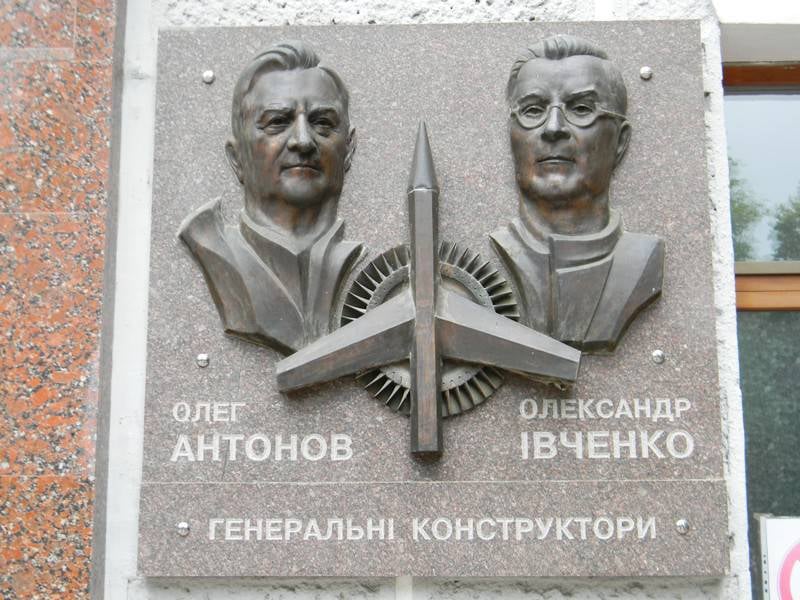
Installed on the building of the Kharkov Aviation Institute (now the National Aerospace University
them. N. E. Zhukovsky). Photo by Dmitry Khramov/ center]
In addition to designing the aircraft, Antonov managed to do a lot of different things: he organized the “Scientists draw” art exhibitions in Kiev and Moscow, which featured works by the greatest scientists and technicians of our country, fought for the ecological salvation of Lake Baikal, supported the all-union importance of the town of Koktebel as an ultra-light center aviation and gliding, tried to rehabilitate the good name of the aircraft designer Igor Sikorsky, participated in the Moscow homemade car runs, held by the magazine "Technology - youth."
Antonov tried to live by the standards of an ideal bright future, and in most cases he succeeded. This was expressed in the versatility of his interests, in lack of restraint, in bright altruism, in an effort to express himself creatively to the end, to the last breath and, finally, in his honesty, decency and modesty.
Based on the book by Vasily Zakharchenko "Oleg Antonov"
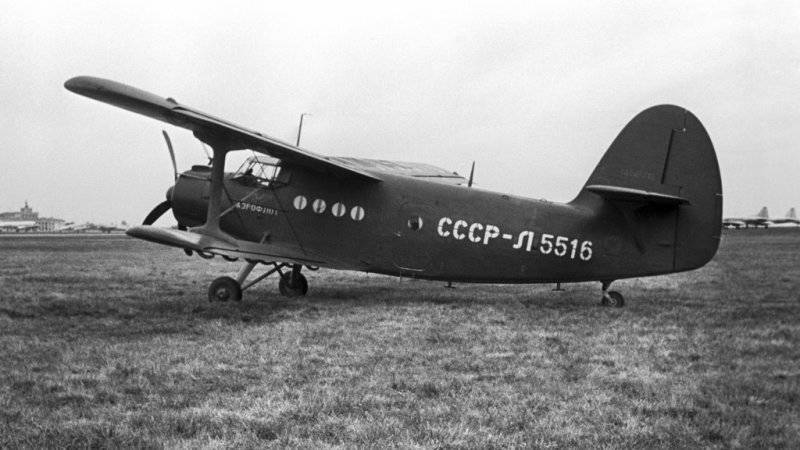
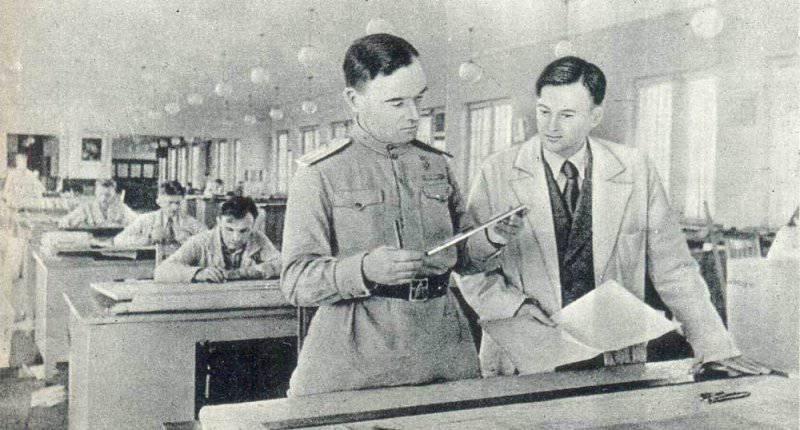
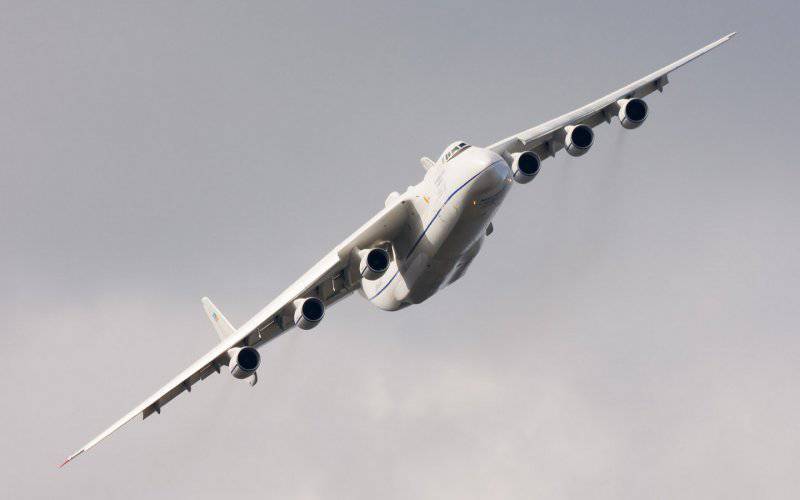
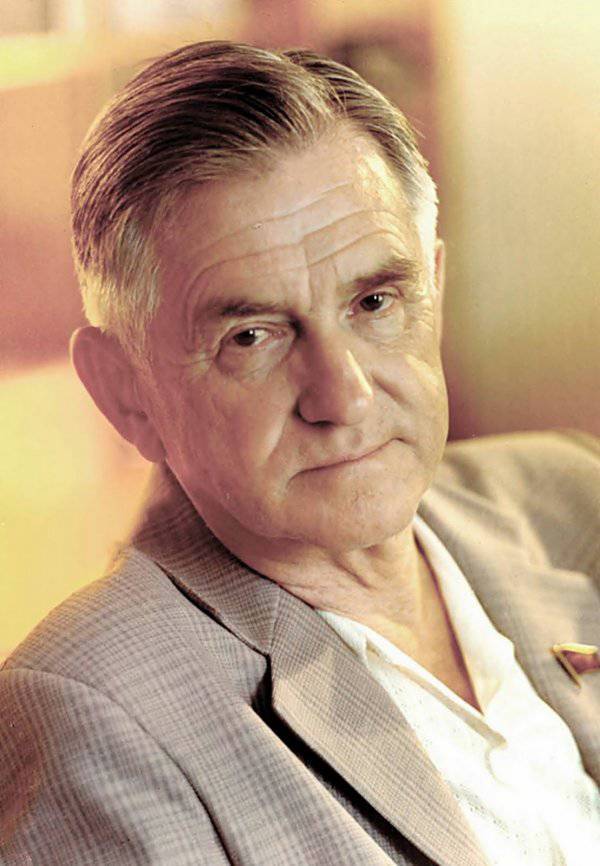
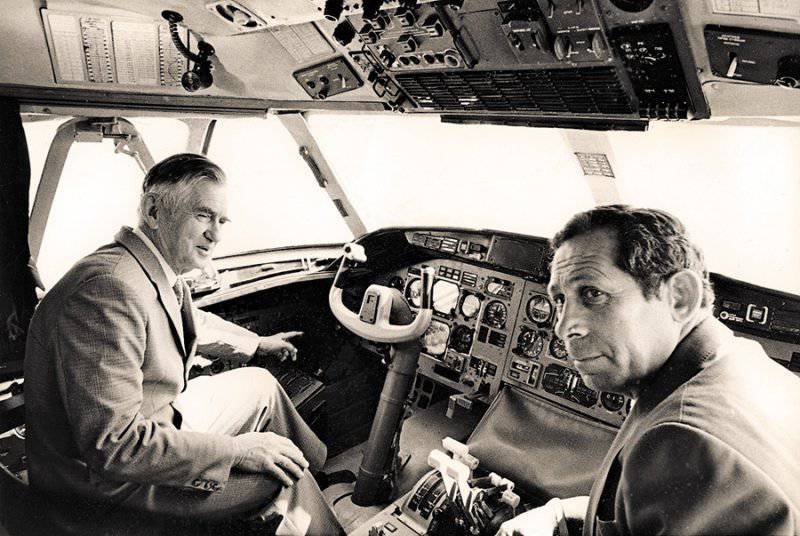
Information